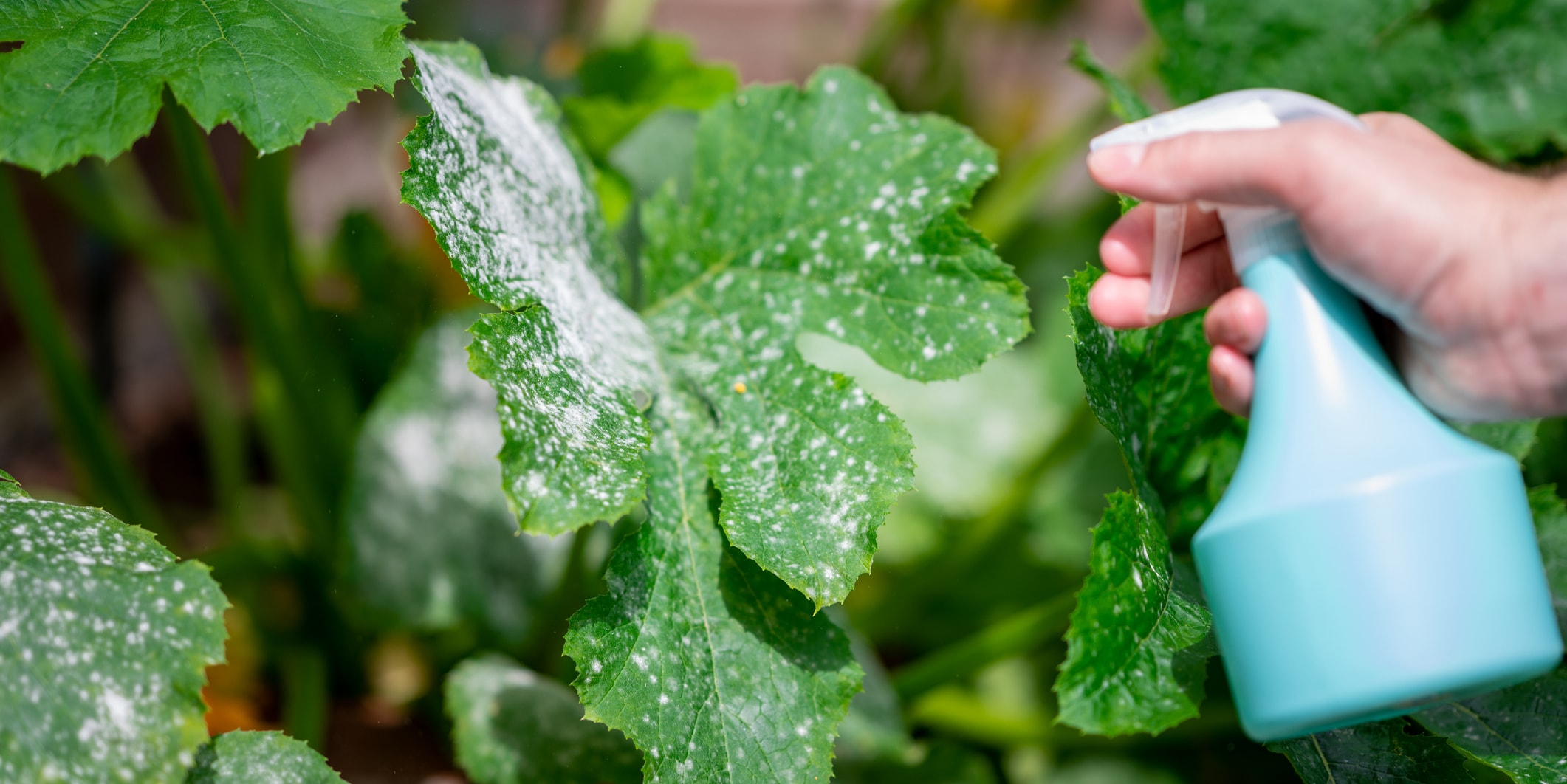
WAGE WAR ON POWDERY MILDEW - TOP TIPS AND NATURAL TREATMENTS
What is powdery mildew?
Powdery mildew is a fungal disease that affects ornamental plants, fruit trees, and grapevines. It often arises under warm, humid conditions and appears as a white, powdery coating on the leaves, stems, or fruits of plants. The fungus can hinder growth and reduce crop yields.
What are the first signs of powdery mildew on plants?
Powdery mildew can easily be overlooked as initially only small spots are visible on the leaf surface. The fungal disease can be clearly identified by:
- White, powdery coating on the leaves.
- Yellow, brown, or purple discolored leaves, especially around the white coating.
- Deformed, curled, or overgrown leaves.
- The affected leaves may fall off prematurely or die.
- Infected plants demonstrate slowed growth or a decreased production of flowers and fruits.
It's important to regularly check the plants to identify signs of powdery mildew early on and take measures to combat its spread.
About the expert Burkhard Bohne
Burkhard Bohne, born in 1962 in Northeim, is a specialist gardener and has been technical director of the medicinal plant garden at the TU Braunschweig since 1990. He also works as a freelance author for various daily newspapers and gardening magazines, is a Reiki instructor, author of several gardening books and works as a garden planner with a focus on herb and vegetable gardens. In 2011 he founded the first herbal school in Braunschweig and in 2016 the herbal school in Berlin. He lives with his family in Braunschweig.
Which plants are particularly susceptible to powdery mildew?
Powdery mildew can affect numerous plants, but some species are particularly susceptible:
- Fruit trees such as apples, pears, peaches, but also grapevines, especially during the warm summer months.
- Vegetables like courgette, squash, cucumbers, tomatoes, and melons are particularly susceptible to powdery mildew.
- Leafy vegetables like spinach, lettuce, and Swiss chard can also be affected by powdery mildew, especially in wet weather.
- Ornamental plants like roses, hydrangeas, phlox, lilies, and asters.
- Ornamental shrubs like lilac, forsythia, and weigela are susceptible under unfavorable conditions.
How can one preventively act against powdery mildew?
The best way to combat powdery mildew is to prevent it from appearing in the first place:
- Choose powdery mildew-resistant plant varieties.
- Place plants with sufficient distance between them, which promotes air circulation.
- Don’t overwater the plants and avoid wetting the leaves during watering, especially in the evening. If possible, pour the water directly onto the roots.
- Regularly remove dead leaves and other plant residues to improve air circulation.
- Mulch the soil around the plants to reduce moisture and minimize the splashing of fungal spores onto the leaves.
- Immediately remove infected parts or entire plants to prevent the spread of powdery mildew.
- Strengthen your plants by choosing a suitable location, fertilizing as needed, and (biologically) controlling pests. Healthy plants are more resistant to diseases.
Which natural remedies can be used to combat powdery mildew and other fungal diseases?
Natural remedies can be effectively used to combat powdery mildew and other fungal diseases.
- A solution of water and baking powder (1 teaspoon of baking powder to 1 liter of water) sprayed on the affected plants can inhibit the growth of fungi.
- A mixture of milk and water (ratio 1:9), used as a spray, inhibits the growth of powdery mildew.
- Diluted vinegar (1 part vinegar to 3 parts water) can be used as a spray to kill fungi on the plants.
- Neem oil, diluted with water, has fungicidal properties. Please follow the instructions on the package.
- Garlic has natural, antifungal properties. Garlic cloves are soaked in cold water, strained, and the solution is sprayed on the plants.
- Nettle tea is a natural fungicide. The leaves are soaked in water, strained, and the solution is sprayed on the plants.